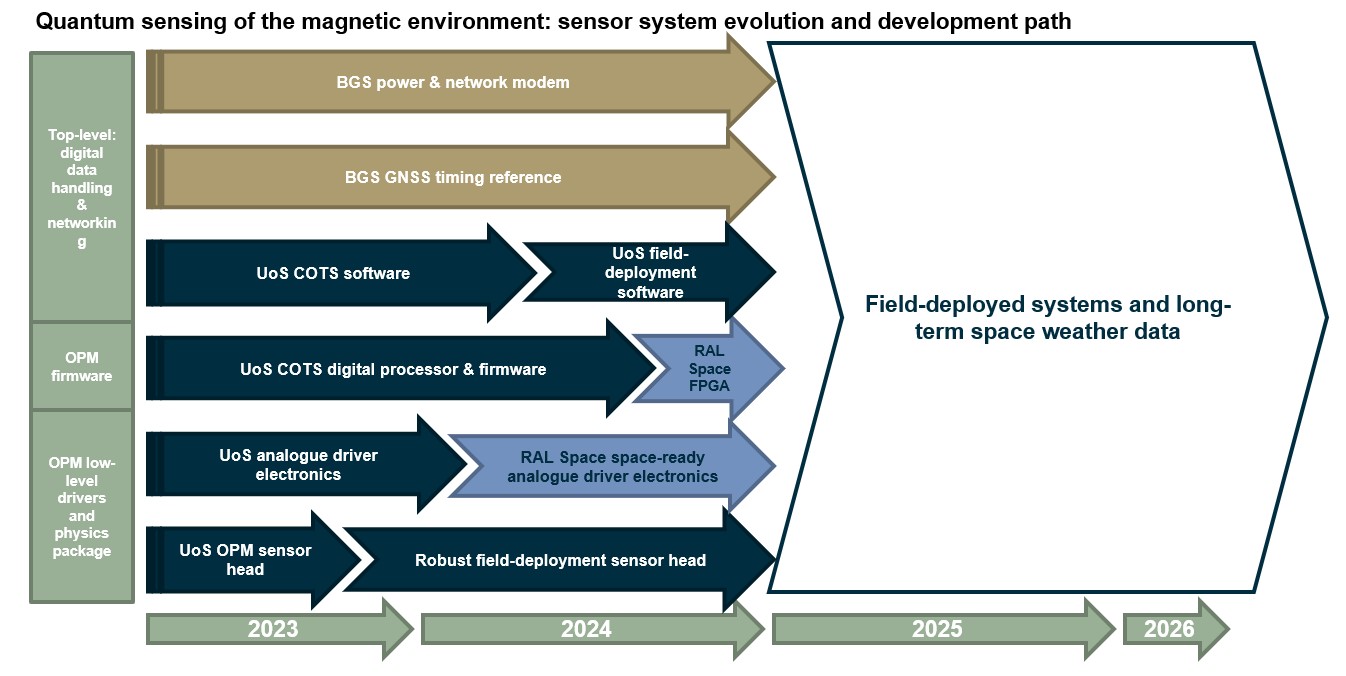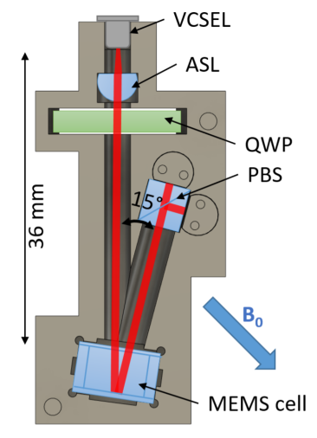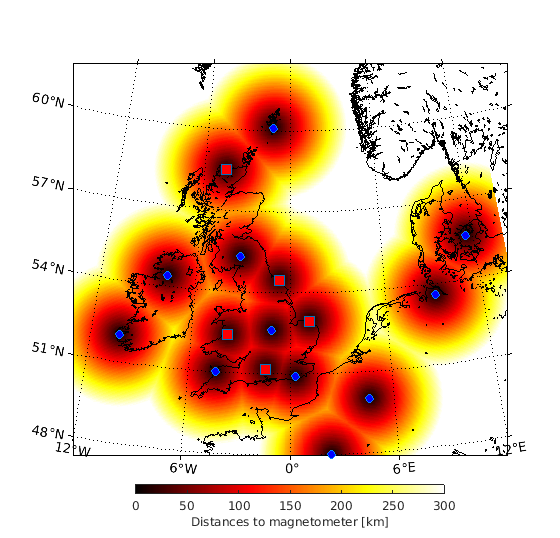Quantum Magnetometers for Space Weather
In collaboration with the University of Strathclyde and RAL Space, the British Geological Survey has been awarded an STFC-EPSRC Quantum Sensing of the Environment grant. The project aims to develop an absolute vector magnetometer based on University of Strathclyde Optically Pumped Magnetometer (OPM) technology with RAL Space analogue electronic technology, test at Eskdalemuir geomagnetic observatory and deploy at five sites around the UK to monitor external magnetic field variation. This is a three-year programme running from February 2023 to February 2026.
Currently, the BGS operates three magnetic observatories and three magnetic variometers in the UK. These provide the high quality, near-real-time data that underpin products provided to both commercial and academic users. We plan to install five new quantum magnetic observation sites to increase the number of operational observations during magnetic storms, the planned target areas include:
- Northern Scotland (Sutherland)
- Northeast England (Whitby)
- Wales (Anglesey)
- Central England (Salisbury)
- Eastern England (Norwich)
- Develop a new alkali-vapour optically pumped vector magnetometer.
- Test the new standalone OPM sensor system, employing a resonant alkali spin maser technique combined with an absolute calibrated free-induction magnetometer, at Eskdalemuir geomagnetic observatory in the Scottish Borders for extended measurement runs.
- Build and deploy a further five sensors across mainland Britain to augment the existing BGS real-time space weather monitoring at less than 200 km spacing.

Measuring changes of the geomagnetic field during a storm is of critical national importance and can help understand the hazards posed by space weather. While present day scientific-level instruments that measure the magnetic field (called fluxgate magnetometers) at UK geomagnetic observatories are very sensitive, they are not quite sufficient for the task of making absolute rapid, high-accuracy and noise-free measurements of the magnetic field. We wish to build and deploy a new type of sensor known as an optically pumped magnetometer. This uses cutting-edge quantum technology, developed in the last decade, to measure the vibrations of Caesium (Cs) atoms inside a glass cell which can detect small variations in the Earth's magnetic field. As a bonus, the new magnetometers reduce the size, weight and power requirements of a sensor while potentially increasing its accuracy over 100-fold compared to current fluxgate and proton precession instrumentation.
Reducing the intersite spacing between magnetometer sites will help understand the detailed variation of the magnetic field during large geomagnetic storms. The map shows the colour-coded distance between sites once the new quantum magnetometers have been installed at their nominal locations. This will reduce the distance to below 200 km in many parts of the UK.
Better UK coverage of the magnetic fields will improve nowcast and forecast data on the potential ground-level impacts of space weather on critical national infrastructure (CNI), such as power and gas transmission systems and rail networks in Britain. This project builds on the science we have delivered under SWIGS and SAGE projects.
Investigators
Principle Investigator: Dr Ciaran Beggan1
Co-Investigators: Mr Chris Turbitt1, Dr Mark Bason 2, Mr Mike Salter 2, Dr Stuart Ingleby3, Dr Dominic Hunter31. British Geological Survey, 2. RAL Space, 3. University of Strathclyde
Contact
For more information please contact Dr Ciaran Beggan.

- Global Geomagnetic Models
- Space Weather and Geomagnetic Hazard
- High-frequency magnetometers
- Schumann Resonances
- Geoelectric field monitoring
- Space Weather Impact on Ground-based Systems (SWIGS)
- SWIMMR Activities in Ground Effects (SAGE)
- Geomagnetic Virtual Observatories
- Quantum magnetometers for space weather
- Magnetotellurics
- Publications List


